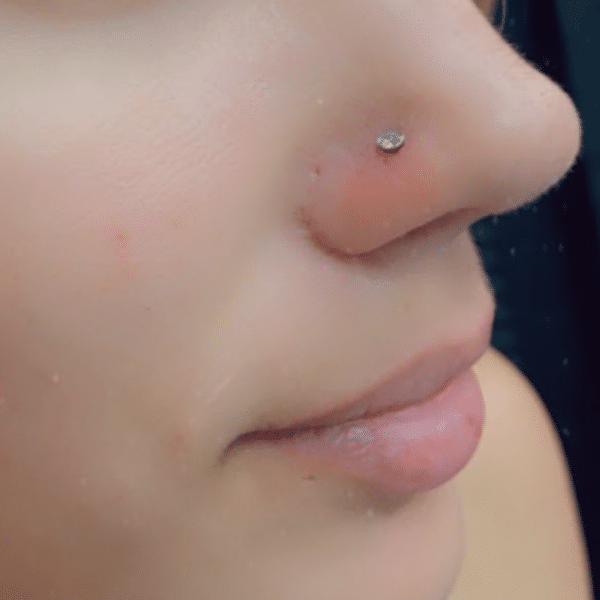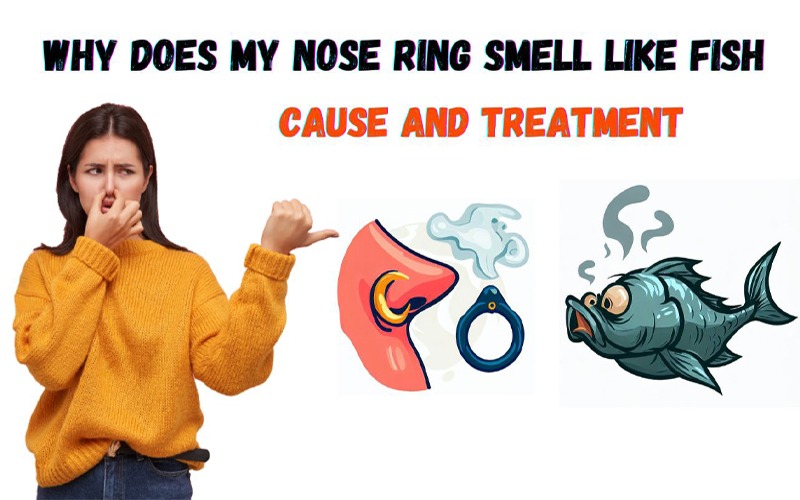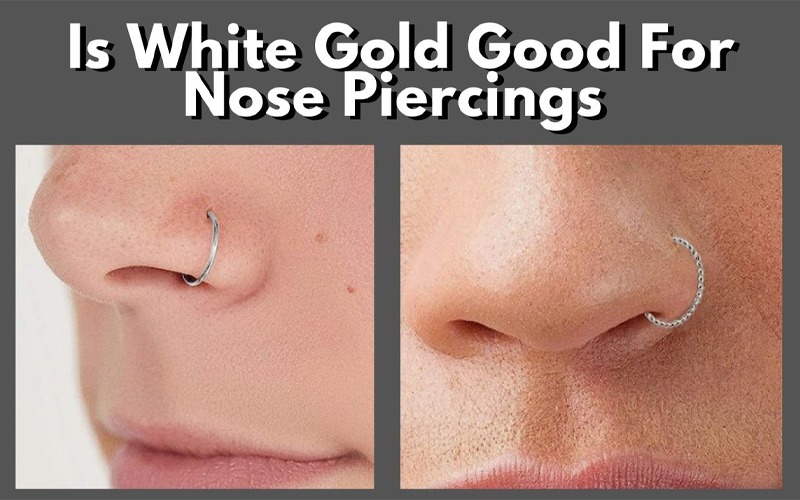The closure time of a nose piercing is a subject that garners considerable attention from both potential piercing enthusiasts and seasoned individuals adorned with nasal jewelry. It is a complex interplay of physiological healing processes and external care practices, which can yield a range of outcomes. While some may observe their piercings beginning to close within hours of jewelry removal, others may retain an open channel for significantly longer periods. This variability is influenced by factors such as the duration the piercing has been in place, the gauge of jewelry used, and the individual’s unique tissue regeneration capabilities. The intricate dynamics of these factors invite further exploration into what one can expect during the closure phase of a nose piercing, and how to navigate the decisions that might prolong or reduce this period. To fully grasp the nuances of this topic, it becomes crucial to examine the empirical evidence as well as anecdotal experiences, which may hold the key to understanding the intricate healing journey of a nose piercing.
Understanding Piercing Closure
How quickly does a nose piercing close when the jewelry is removed, and what factors influence this process? The closure of a nose piercing upon removing the jewelry can vary widely among individuals. Essentially, the body’s natural healing response is activated, which can lead to the piercing hole closing up. The timeline for this closure is influenced by several factors, including the original size of the piercing holes, the individual’s unique healing rate, and most critically, the length of time the piercing has been in place.
For those who cherish the liberty of self-expression through body art, understanding the concept of a fistula is important. A fistula is the tunnel of scar tissue that forms as a result of the healing process after getting a nose piercing. It is this structure that can dictate how swiftly a nose piercing may close once the jewelry is removed. Piercing holes that have not fully developed a fistula, typically within the first few weeks of piercing, can close rapidly, sometimes within hours.
On the other hand, a well-established fistula, formed over years of wearing jewelry, could potentially leave a permanent mark even if the decorative piece is removed. Professional piercings tend to close more slowly compared to those done improperly due to the precision in technique and healing care, leading to a more robust fistula. In addition, immediate removal of jewelry after only a week of piercing typically results in minimal scarring, whereas a piercing that has been adorned with jewelry for an extended period before removal is more likely to leave a lasting scar. To maintain the openness of piercing holes and the freedom to decorate one’s nose, it is crucial to keep the stud or ring in place and adhere to good hygiene practices.
Factors Influencing Closure Time
The age of the piercing and the individual’s healing rate are critical determinants of nose piercing closure time. A piercing that has been in place for an extended period will generally require more time to close, as the tissue has adapted to the jewelry. Additionally, a person’s age and overall health can significantly affect the speed of the healing process, influencing how quickly the piercing may close once the jewelry is removed.
Piercing Age
While several factors influence the closure time of a nose piercing, the age at which the piercing was done plays a crucial role, as younger skin typically heals more rapidly. The piercing age is significant for the following reasons:
- A *fresh nose piercing* will close faster if the jewelry is removed, especially if it has not fully healed.
- If the piercing is older and *fully healed*, it may *take longer to close* due to the body’s adaptation to the jewelry.
- Younger individuals’ skin regenerates quicker, potentially shortening the closure time.
- The longer you have had the piercing, the more your skin has adjusted to its presence, which can influence the time it takes to close.
Understanding your *piercing age* can guide expectations for closure and maintenance of your nose piercing.
Healing Rate
Considering the significance of piercing age on closure times, various factors such as the individual’s healing rate and the size of the piercing also play pivotal roles in how swiftly a nose piercing may close. Younger individuals typically exhibit a faster healing rate, which means the skin around the piercing heals and potentially leads to quicker closure. In contrast, a new piercing that hasn’t developed significant scar tissue may close rapidly once the jewelry is removed. On the other hand, a well-established piercing, with more pronounced scar tissue, might resist immediate closure. To maintain the desired freedom of having an open nose piercing, it’s crucial to keep the jewelry in place. Employing clean tools during jewelry changes can also be essential in preventing unwanted closure and infection risks.
Typical Closure Timelines
Understanding the typical closure timelines for nose piercings is crucial, as they can vary significantly based on several individual factors. Those who have embraced the bold step of getting a nose piercing value their freedom of expression and often want to know how long they have before a piercing may start to close if they decide to remove their jewelry.
Here are some key points to consider:
- Immediate Closure: As soon as jewelry is removed, a new nose piercing can start to close almost immediately, exemplifying the body’s innate ability to heal itself.
- Varied Timeframes: The closure time for a nose piercing is not one-size-fits-all; it is influenced by the healing rate unique to each individual, the size of the piercing, and how long the piercing has been in place.
- Fresh vs. Mature Piercings: A new nose piercing might close rapidly, sometimes within minutes or weeks, whereas older piercings take longer to shrink or may never fully close.
- Septum Piercings: These piercings are notable exceptions, as the hole can often be reopened with ease even after a year without jewelry, highlighting the durability of this piercing type.
It is essential for those who cherish their nose piercings to understand these timelines, as they reflect how swiftly the freedom to reverse this form of self-expression might slip away. The length of time a nose piercing takes to close or even start to close can be as individual as the person sporting it, reinforcing the idea that each piercing journey is unique.
Aftercare and Healing Process
To maintain the integrity of a nose piercing and prevent premature closure, adhering to a diligent aftercare routine is paramount. The healing process is a critical time when the body acclimates to the foreign object within the skin. For those who value their freedom and self-expression through body art, understanding the importance of aftercare is essential to ensure their nose piercings remain a symbol of that freedom rather than a source of discomfort or infection.
Aftercare for nose piercings involves a few key practices that support the healing process. It’s crucial to wash your hands thoroughly before touching the piercing or jewelry to minimize the risk of introducing bacteria. A clean towel or paper product should be used to dry the hands to avoid contamination. The piercing site should be cleaned with a saline solution, which can be applied gently using a clean gauze or paper towel. This helps to remove any buildup and soothes the area, promoting healing.
It’s also important to leave the jewelry in place during the initial healing period. Removing the stud or ring can lead to premature closure of the piercing and may necessitate re-piercing later on. To prevent the piercing from closing and to avoid irritation, refrain from fiddling with the jewelry or exposing it to unclean environments.
Reopening Closed Piercings
When a nose piercing closes, the duration it takes to seal and the possibility of reopening it without professional help vary based on several factors. These factors include the initial piercing’s age, the individual’s tissue regeneration capabilities, and the size of the jewelry previously worn. It is advisable to consult a piercing professional to evaluate the closure and provide guidance on safe reopening procedures to minimize the risk of complications and scarring.
Closure Time Factors
Several factors influence the closure time of a nose piercing, including the gauge of the jewelry, the individual’s healing capabilities, and the duration the piercing has been in place. Understanding these closure time factors can empower those who cherish their bodily autonomy to make informed decisions about their piercings.
- Gauge of Jewelry: Thicker gauges take longer to close, offering more freedom if you wish to remove the jewelry temporarily.
- Healing Capabilities: Individuals with faster healing are likely to close quicker, necessitating mindful attention to the time without jewelry.
- Duration of Piercing: Piercings that have been around for years develop a more established channel that resists closure.
- Piercing Care: Proper aftercare and handling of the area around the piercing can extend the time frame for safe removal and reinsertion.
Professional Reopening Advice
Understanding the factors that influence the closure time of a nose piercing is crucial, and in the event that a piercing does close, seeking professional advice for reopening can ensure it is done safely and effectively. When a nose piercing has closed, inserting jewelry back into the channel might be challenging or even risky if done improperly. It is essential to respect the healing process of your body which might be taking longer to fully recover. By consulting with a professional, you secure your rights to make informed and autonomous decisions about your body. Professional reopening advice can prevent complications such as infections or scarring. They are equipped to assess whether the piercing can be reopened or if a new piercing is advisable.
Minimizing Closure and Scarring
To minimize the risk of your nose piercing closing and to reduce potential scarring, consistent maintenance of the piercing is essential, including keeping the jewelry in place and ensuring proper hygiene during handling. Considering that the body sees the jewelry as a foreign object, it’s crucial to provide a stable environment to prevent the healing process from reversing course.
Here are some prevention tips to help in minimizing closure and scarring:
- Maintain Jewelry Placement: The simple act of keeping your nose ring or stud in place is paramount. It’s the best defense against closure, as removal often signals the body to begin healing the piercing.
- Hygiene and Handling: Always wash your hands before touching your piercing or jewelry. Utilize clean tools if you must remove or adjust your jewelry to avoid introducing bacteria and possible infection.
- Scar Care: To reduce scarring, avoid picking at the piercing. Apply scar treatment creams or gels as recommended by a professional, and protect the area from excessive sun exposure which can exacerbate scarring.
- Patience with Healing: The good news is that with proper care, the risk of closure diminishes over time. However, take for a nose piercing to reach the final stages of healing up to 8 months or more. Ensure there is no pain, tenderness, discharge, or discomfort before attempting to change the jewelry.
Adhering to these guidelines will not only foster your freedom to express yourself through body art but also ensure that your piercing remains an attractive and healthy form of self-expression.
Professional Advice on Closure
Professionals in the piercing industry emphasize the importance of following proper aftercare protocols to mitigate the risk of a nose piercing closing prematurely. The road to self-expression should not be hampered by the neglect of simple care routines that take mere minutes of one’s day. It is vital to understand that the body sees the jewelry as a foreign object, and its instinct is to heal the wound by making the piercing go away. Hence, maintaining the piercing’s openness is a conscious effort to counteract the body’s natural inclination.
The closure time of a nose piercing can vary greatly, and it is influenced by several factors. The size of the hole, the individual’s healing rate, and the professional execution of the piercing all play a role. Keeping the stud or nose ring in place, using sterilized tools for any removal, and resisting the urge to touch or fiddle with the piercing can prevent unwanted closure. Freedom lies not in the absence of care but in the deliberate choice to maintain what one values—such as a piercing.
For those who decide it’s time to remove their nose ring or stud, the process should be simple and clean. However, the time it will take for the piercing to close is unique to each individual. It is always wise to consult with a professional piercer regarding any concerns about healing or scarring, as they can offer tailored advice and solutions.
In essence, the longevity of a nose piercing depends on the attention and respect given to it. Just as freedom requires responsibility, a piercing demands consistent care to ensure it remains a statement of individuality for as long as desired.





